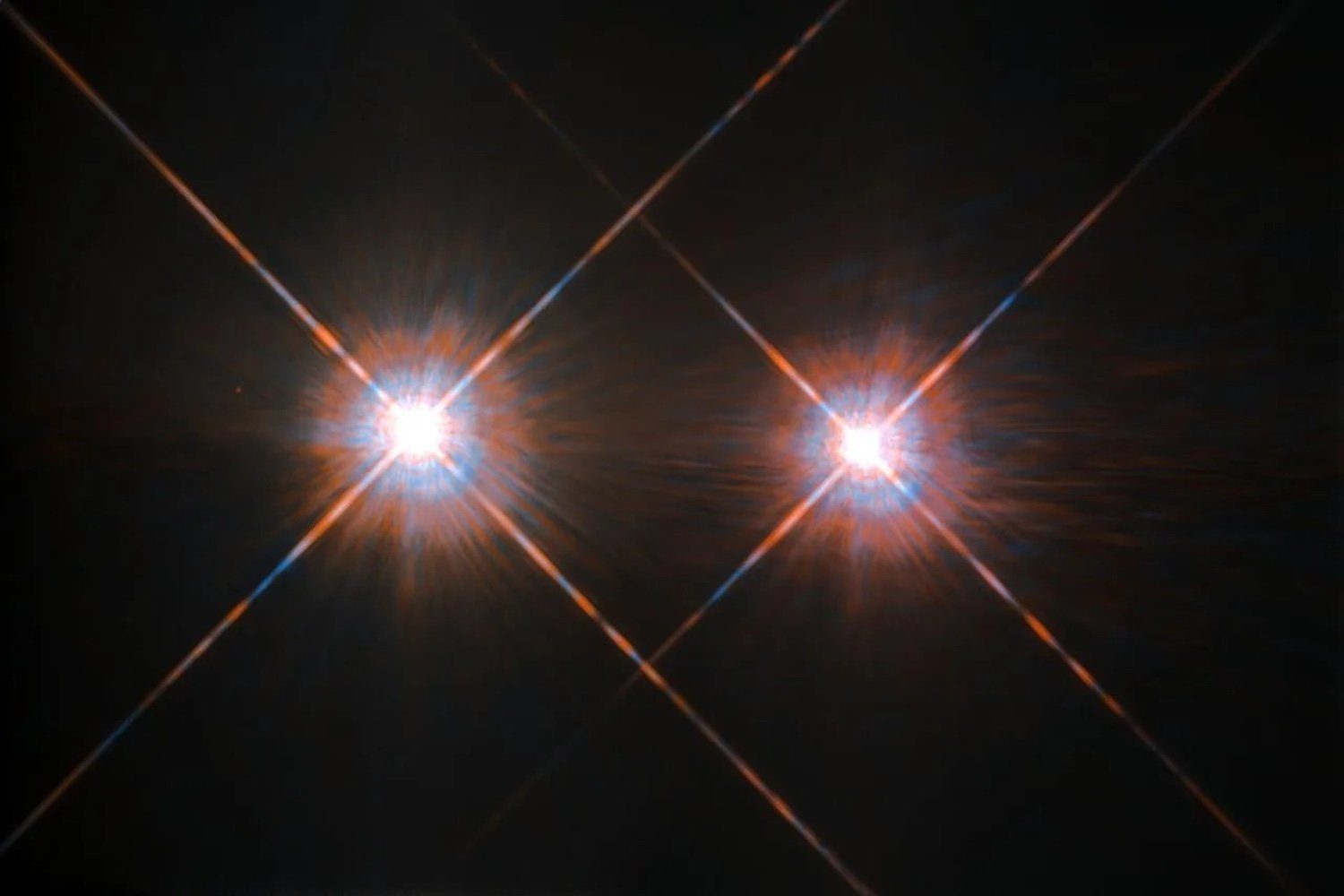
Our closest stellar neighbor, Alpha Centauri, is gradually approaching us at a leisurely speed. In roughly 3,000 years, this triple star system will reach its nearest point to Earth. However, recent studies suggest that material from Alpha Centauri has likely already entered our solar system, with even more expected to follow.
Alpha Centauri is located 4.37 light-years from Earth, which is relatively close in the vastness of the universe. This intriguing star system consists of two Sun-like stars, Alpha Centauri A and Alpha Centauri B, along with a red dwarf named Proxima Centauri. As it maneuvers through space, this dynamic stellar trio ejects material into interstellar space. A recent study published in the Planetary Science Journal estimates that over the last 10 million years, around one million objects from Alpha Centauri have gradually drifted into our solar system.
In 2017, an unusual, elongated object made its way through our solar system without prior notice. Dubbed Oumuamua, it became the first recognized interstellar object to enter our solar system. Yet, its origin remained largely unknown. What was the source of this oddly-shaped cosmic traveler?
To enhance our understanding of interstellar objects, the researchers conducted their study based on Alpha Centauri, exploring how materials from this nearby star system could reach our Sun’s orbit. Space is always in flux, influenced by gravitational forces, magnetic fields, and interstellar drag, which can draw objects toward our solar system. The study indicates that only materials larger than 10 microns can withstand the journey.
Utilizing computer models to simulate the transfer of material from Alpha Centauri, the researchers concluded that approximately one million objects exceeding 328 feet (100 meters) could be hidden within the Oort Cloud, an extensive spherical shell encasing our Sun in the farthest reaches of our solar system.
Given their distance, locating these objects might pose significant challenges. There exists a very slim probability—one in a million—that one of these objects is located within 10 astronomical units (AU) from the Sun. To put this in perspective, one AU is the average distance from the Earth to the Sun, meaning 10 AU is about the distance of Saturn’s orbit. “Any material currently departing from that system at low speed would be generally heading towards the solar system,” the research indicates.
It’s important to note that the study is based on computer simulations, and to date, astronomers have not yet detected interstellar materials from Alpha Centauri. Nevertheless, if such materials exist, recognizing them would be a significant initial step. Investigating these fragments from our neighboring star system could offer invaluable insights into Alpha Centauri.
Proxima Centauri is known to have two exoplanets, including an Earth-sized planet located within its habitable zone (the ideal region where liquid water could exist) and a super-Earth situated farther out. There are suspicions that Alpha Centauri A may host a Neptune-sized exoplanet, although its existence remains unverified. It’s likely that additional planets orbit this triple star system, with the potential for habitability. Thus, understanding the interstellar materials that may originate from Alpha Centauri could unravel new information about planetary formation and the ongoing search for extraterrestrial life.









